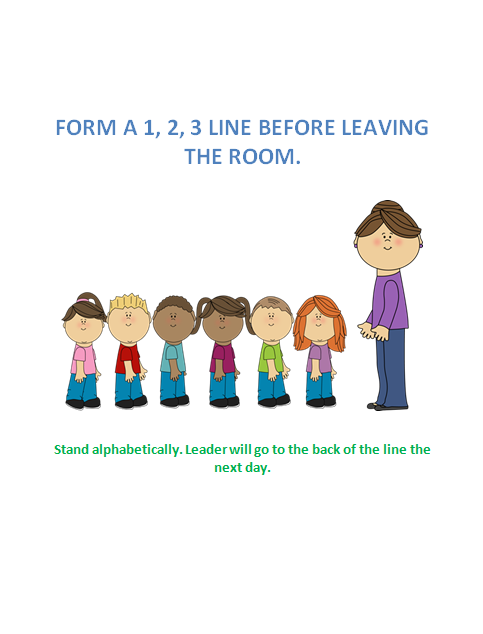- Place backpacks and other items in your cubby first thing in the morning.
- There is a folder attached to the side of your desk. When you have unfinished work, place it in the folder and finish it during your next free time.
- There are 3 computers to take AR tests on. If all of the computers are full, add your name to the "AR list" on the front board.
- On the back wall, you each have a pencil pocket. I will be the only one to sharpen pencils. When a pencil is broken, place it point down. Once I have sharpened it, I will place it point up.
- When we need to go somewhere, you will line up in a "1-2-3" line. This is alphabetical order by your last name. We will practice this lots of times in the next few days, so don't worry about it! :)
- When you are finished with work, place it in the next available slot in the trays by the door.
- You will take your homework folder home each day. You will read an AR book, do an activity with your spelling words, and practice your math facts. Be sure to bring your folder back each day to earn DoJo points!
- We will be using a system called Class DoJo. For each good thing you do (homework completed, on task, etc.), you will receive a point. For each bad choice you make (no homework, not following directions, etc.), you will lose a point. This helps to remind you about what you should be doing. :)
- We will be using lots of tools in math this year. Let's remember that math tools are not toys. We have toys in this room to play with at some points, but our math tools are to use for math only. :)
- Each day, you will come in, put away your things, and then do your morning work. There will either be a paper on your desk or instructions on the board. Please get to work as soon as possible once you get in the room. :)
These procedures help students to feel "in the know" on the very first day of school. :)


